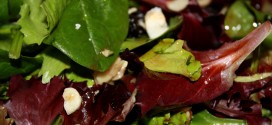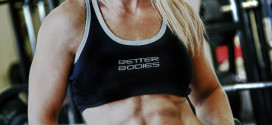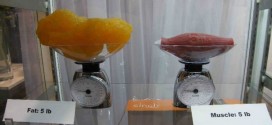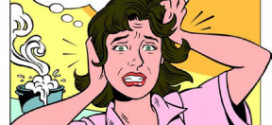Whether you’re a casual weekend athlete or a seasoned veteran you would have no doubt experienced those days when despite a good night’s sleep and proper hydration, you just lack the energy to train or perform at your best. Well recent studies show this could be due to a condition known as ‘sports anaemia’. Here we explain what it is, why it affects 50% of female endurance athletes (J. Malczewska et al, 2000) and what you can do to avoid it and ensure you maintain high energy levels.
What’s the role of iron within the body?
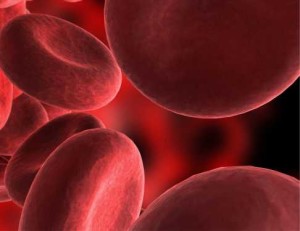 You have around 3.5g to 4.5g of stored iron in your body with the majority being located in the haemoglobin in the blood and the rest found in the liver, spleen and bone marrow (and a very small amount in the myoglobin which is found in the muscle tissue.) It’s mainly used for thyroid hormone metabolism, neural function, immune function, erythropoiesis (the formation of new red blood cells) and one of the most important roles iron plays is as a component of the protein haemoglobin, which carries oxygen from the lungs to the body’s cells. Because one red blood cell contains about 250 million haemoglobin molecules, a higher level of iron can mean a higher aerobic capacity which ultimately means you are better able to perform during training or competition.
You have around 3.5g to 4.5g of stored iron in your body with the majority being located in the haemoglobin in the blood and the rest found in the liver, spleen and bone marrow (and a very small amount in the myoglobin which is found in the muscle tissue.) It’s mainly used for thyroid hormone metabolism, neural function, immune function, erythropoiesis (the formation of new red blood cells) and one of the most important roles iron plays is as a component of the protein haemoglobin, which carries oxygen from the lungs to the body’s cells. Because one red blood cell contains about 250 million haemoglobin molecules, a higher level of iron can mean a higher aerobic capacity which ultimately means you are better able to perform during training or competition.
What happens when iron stores are low?
But iron stores can be hard to maintain because the typical iron absorption from eating a typical Western diet ranges from 10-35% while following a vegetarian diet has much less iron absorption, from 1-20%. Some foods are higher in iron but keep in mind the absorption rates are still low comparatively speaking. To add to this challenge, scientists have discovered something called ‘sports anaemia’ this is essentially where muscle fibres are damaged during intense exercise training and if there is inadequate protein intake then the body draws upon haemoglobins and red blood cells to repair the muscle. Plus to make things worse, experts believe female athletes are more prone to ‘sports anaemia’ than male athletes since additional blood (and iron) could be lost through menstruation. All in all this is bad news for an athlete’s performance since haemoglobin is integral to our muscular endurance and cardiovascular fitness and obviously reducing the amount of them in the blood is going to have a negative effect on our energy levels.
How to prevent ‘sports anaemia’
The good news is there are changes you can make to your diet to prevent ‘sports anaemia’. These range from reducing certain minerals and foods in the diet that are known as ‘iron inhibitors’. These have been shown to decrease iron absorption in the body and include calcium, zinc (although maybe not when consumed as food and not as a supplement), phytates and fibre found in whole grains and nuts, tannins found in coffee and tea and soy products. Also to include more ‘iron promoters’ in the diet, these include meat, fish, poultry, broccoli, brussels sprouts, tomatoes, potatoes, green and red peppers and other vitamin C rich foods.
Specific iron measurements

As per the table above, the recommended daily allowance of iron is 15mg for a female aged 11-50, but as already discussed athletes requirements are usually slightly more. That’s why it’s important to pay particular attention to your training intensity, food intake or look to supplement your diet.
References:
Beard J, Tobin B. Iron status and exercise. Am J Clin Nutr. 2000; 72(2): 594S-597S.
Malczewska J, Raczynski G, Stupnicki R. Iron status in female endurance athletes and in non-athletes. Sport Nutr Exerc Metab. 2000; 10: 260-276.
Schena F, Pattini A, Mantovanelli S. Iron status in athletes involved in endurance and in prevalently anaerobic sports. In: Kies C, Driskell JA, eds. Sports Nutrition: Minerals and Electrolytes. Philadelphia, Penn: CRC Press; 1995: 65-69.
Clarkson P, Haymes EM. Exercise and mineral status of athletes: calcium, magnesium, phosphorus, and iron. Med Sci Sports Exerc. 1995; 27: 831-843.
Kleiner SM. The role of meat in an athlete’s diet: Its effect on key macro- and micronutrients. Sports Science Exchange. 1995; 8: 1-8.
Hurrell RF. Bioavailability of iron. Eur J Clin Nutr. 1997; 51: S4-S8.
Snyder AL, Dvorak LL, Roepke JR. Influence of dietary iron source on measures of iron status among female runners. Med Sci Sports Exerc. 1989; 21: 7-10.
Clark N, Nelson M, Evans W. Nutrition education for elite female runners. Phys Sportsmed. 1988; 16: 724.
Boyadjiev N, Taralov Z. Red blood cell variables in highly trained pubescent athletes: A comparative analysis. Br J Sports Med. 2000; 34: 200-204.
Smith JA. Exercise, training, and red blood cell turnover. Sports Med. 1995; 19: 9-31.
Elliot DL, Goldberg L, Eichner ER. Hematuria in young recreational runners. Med Sci Sports Exerc. 1991; 23: 892-894.
Colgan M, Fielder S, Colgan LA. Micronutrient status of athletes: Calcium, magnesium, phosphorus, and iron. J Appl Nutr. 1991; 43: 16-27.
Waller MF, Haymes EM. The effects of heat and exercise on sweat iron loss. Med Sci Sports Exerc. 1996; 28: 197-203.
Hallberg L, Roassander-Hulten L. Iron requirements in menstruating women. Am J Clin Nutr. 1991; 54: 1047-1058.
Rowland TW, Deisroth MB, Green GM, Kelleher JF. The effect of iron therapy on the exercise capacity of nonanemic iron-deficient adolescent runners. Am J Dis Child. 1988; 165-169..
 Supplement Judge Unbiased Supplement Reviews – Do they really work??
Supplement Judge Unbiased Supplement Reviews – Do they really work??

